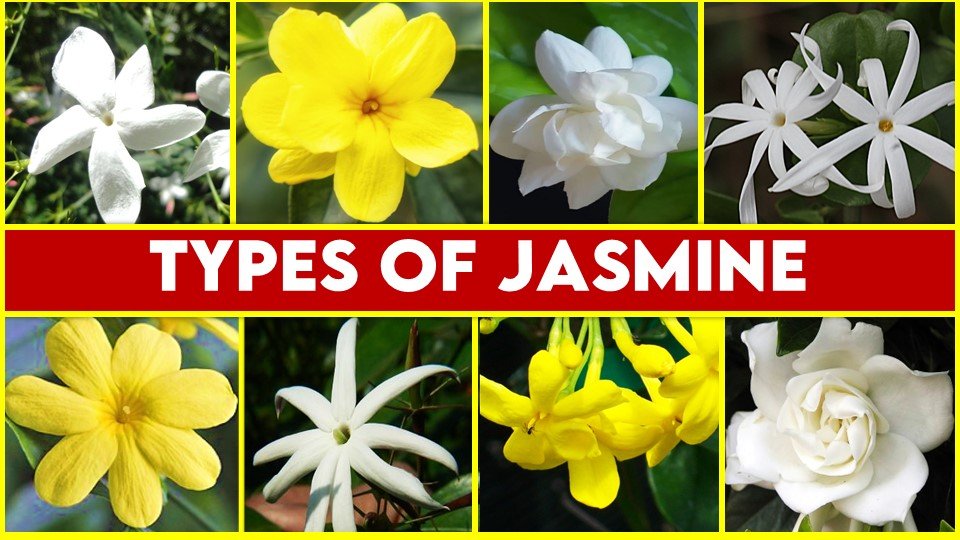An enchanting, hypnotic fragrance mingling with your olfactory lobes, a therapeutic element amid the meadows, a feast to the eyes of the beholder and still managing to symbolize purity, love, and beauty. Even with no mention of the title, the guesses wouldn’t have been tough. We’re escorting you through the world of Jasmine and will introduce you to many types of Jasmine. Jasmine’s identification isn’t confined to white, little, flowers having fragrances of only one kind but there is, as I mentioned, a world of Jasmines and a world is never homogeneous.
Interesting facts about Jasmine:
- Its original name was not Jasmine but “Yasmin” which means “Gift from God”.
- Jasmine has been used for treating liver problems through a Jasmine extract – oleuropein.
- “Night Queen” aka “Raat ki Rani” or “Night Jasmine” is not true Jasmine because it belongs to a different family.
- Jasmine is also called Juhi, a name rarely used.
- Because of its alluring fragrance, or has been used in aromatherapy and although not scientifically proven but is used as an aphrodisiac.
- Different types of Jasmine have an important position in the hair care industry as well because of their smoothening effect and fragrance
- Jasminum has a wide variety, almost 200 species are present within this genus.
14 Types of Jasmine Flowers
1. Royal Jasmine
Scientific name :- Jasminum grandiflorum.
A perennial plant which blooms throughout the year, it is said to be a native species of South Asia and some parts of China. It is also called Getti malli. Plant’s height ranges from 2-4 m. It requires moist soil, therefore water supply and sunny weather is favorable for its growth. Royal jasmine is existential in the medicinal world as well, it has curative properties for liver problems, has anti aging properties, fills up wounds, cures digestion problems. Its flowers do not have dense but 5-6 white coloured fragrant petals.
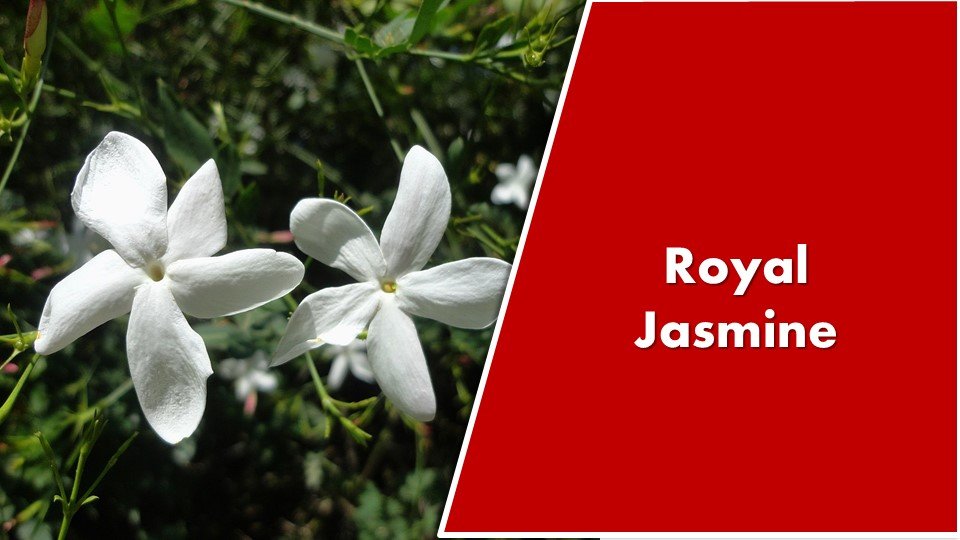
2. Downy Jasmine
Scientific name :- Jasminum multiflorum
Growing this type of Jasmine species isn’t a sophisticated task, it grows throughout the year. The flowers, as the name demonstrates, are star-shaped or look like a pinwheel. Plant height goes up to 3 meters and requires 5-6 hours of sunlight. Ban malti, Kunda are some other commonly used names for this species. It is used in fencing, gap filling and has ornamental value, also used as sedative, in perfumery and other pertaining industries.
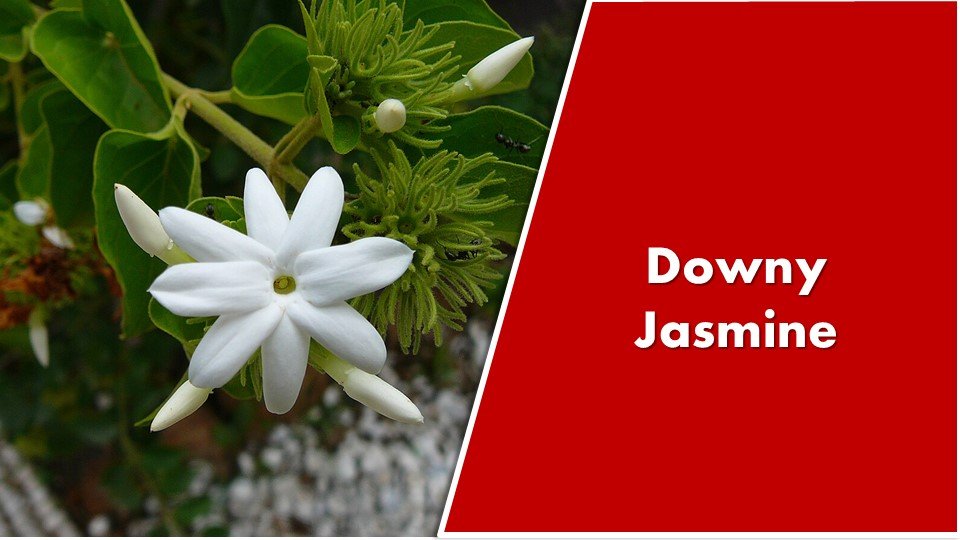
3. Lemon Scented Jasmine
Scientific name:- Jasminum azoricum
The green part or foliage of this plant stays throughout the year, the flowering doesn’t occur in frosty condition but has a lengthy flowering period. Its origin lies in the Portuguese island of Madeira. It gets 2-4 meters tall and its flowers grow around 2-3 cm in diameter. It is a twining species meaning that they climb up the support they’re provided with. It has a unique fragrance like that of other Jasmine species with a tinge of lemon scent. It is propagated through cutting and layering as well. It blooms the most between March-June.
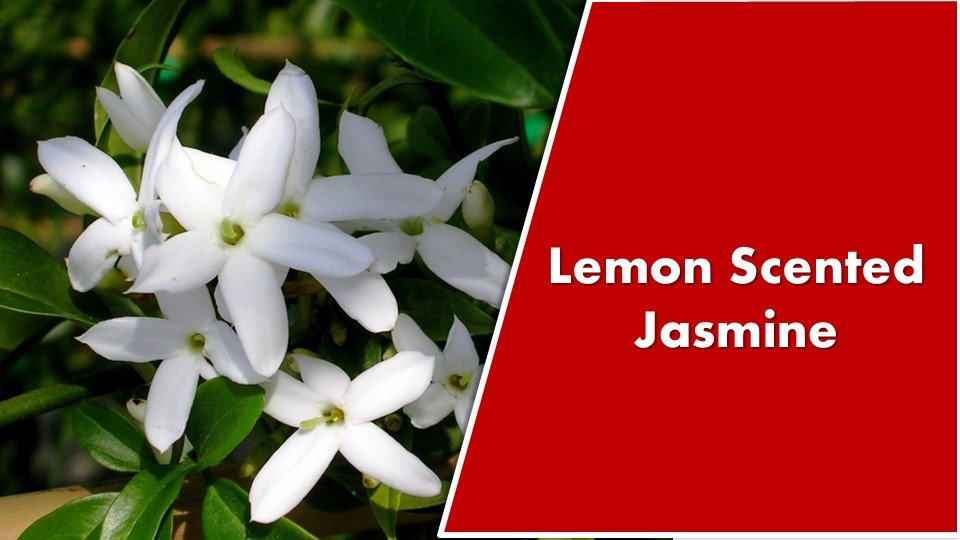
4. Angelwing Jasmine
Scientific name :- Jasminum laurifolium f. nitidum.
Its flowers are fragrant, white coloured with purple shade on the underside which is why its buds look purple and bloom at night. It is a spreading type of plant which gradually reaches the height of approximately 3 meters but it can also act as a vine if trained accordingly and gradually becomes woody. This plant doesn’t prefer cold or continuous shade, it requires sunlight. It is used in making scented candles, perfumes, oils , creating shrubbery borders , for fragrant ambience etc.
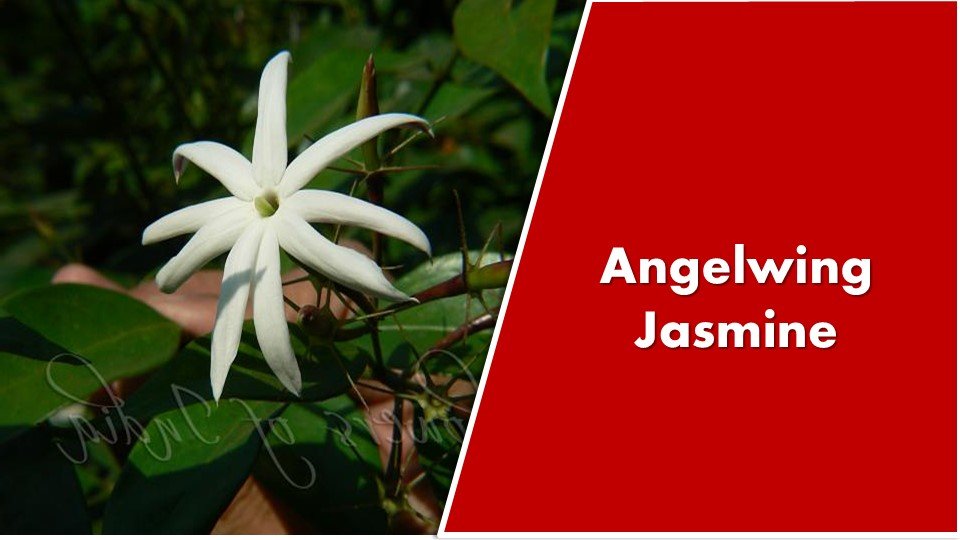
Also Read: Top 15 Night Blooming Flowers
5. Italian Jasmine/Yellow Jasmine
Scientific name :- Chrysojasminum humile.
The species name humile literal meaning low growing which is named to match an irony with its tall height i.e, 4-5 meters and takes up a tree like form. It is a spreading and arching shrub, and can act as a sprawling plant through tendrils. Its flowers are yellow coloured and not as fragrant as other Types of Jasmine species, they have nil to slight fragrance, they form black coloured berries after flowering. Flowering occurs in May-June and berry formation in Autumn. A well drained soil, comparatively chilly climate is tolerable for Yellow Jasmine.
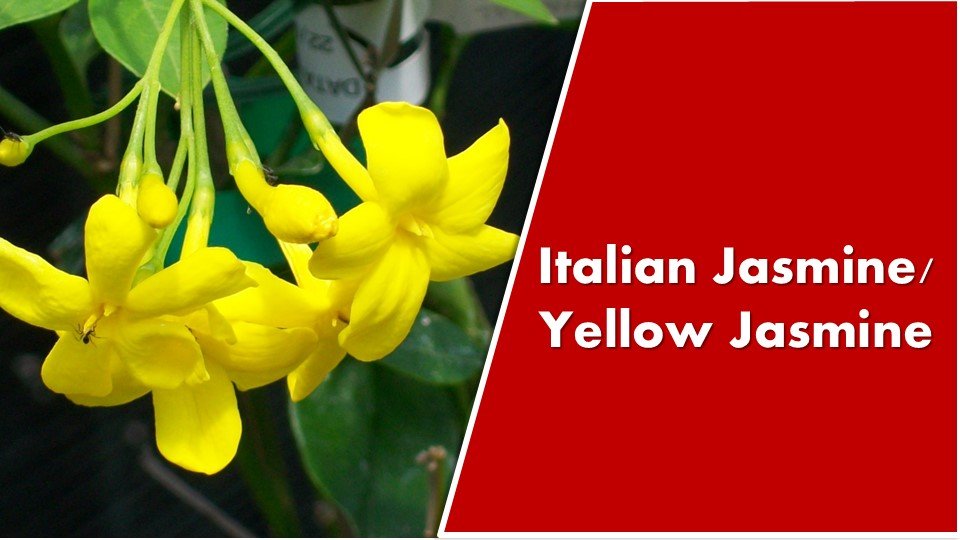
6. Cape Jasmine
Scientific name:- Gardenia jasminoides.
Its place of origin is believed to be “Cape of good hope”, South Africa and hence its name, “Cape Jasmine”. It does not actually belong to the Oleaceae or Olive family but it is from the Coffee family, it has been perceived as Jasmine because of its similar fragrance. Shrubs of this type of Jasmine have 8-10 ft. height and aren’t frost or winter tolerant. The flower’s color is white and yellow or white with yellow streaks on the inner side. All of its debated places of origin are hot and humid, therefore not extremely high or low temperature but a temperature between 15- 35°C is suitable for its growth. Its parts are consumed orally in case of bladder problems, diabetes, sleeplessness etc. It is also used in the dying industry for its yellow color.
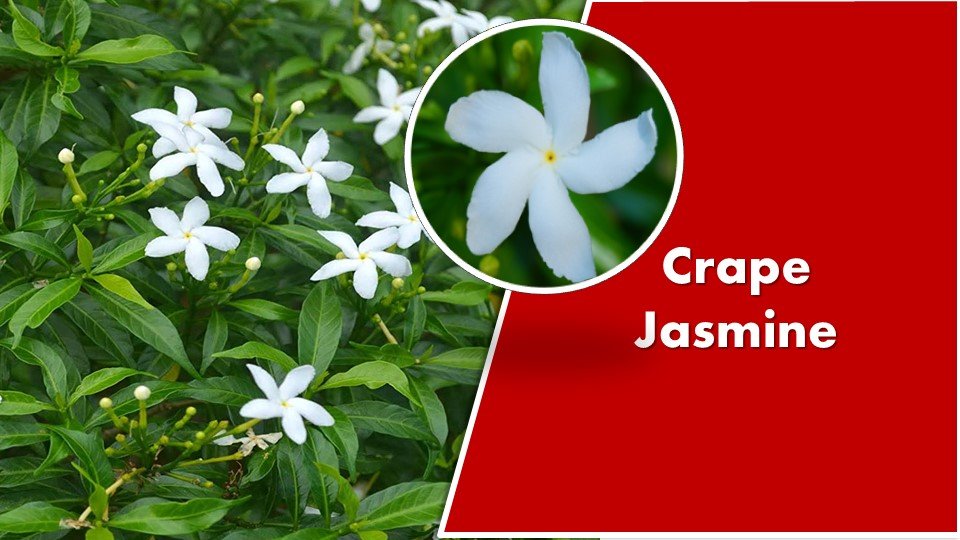
7. Stiff Jasmine
Scientific name :- Jasminum volubile.
It is found mostly in Australia. Like many Jasmines discussed above, it is also both a shrub spreading approximately for 2 meters and a creeper attaining a height of approximately 10 meters.23-32° C temperature is suitable for its good performance. Rainforests’ premises or margins are the hotspots for this species. It finds its uses not only in the perfumery or skincare industries but also used in dishes to enhance their flavor.
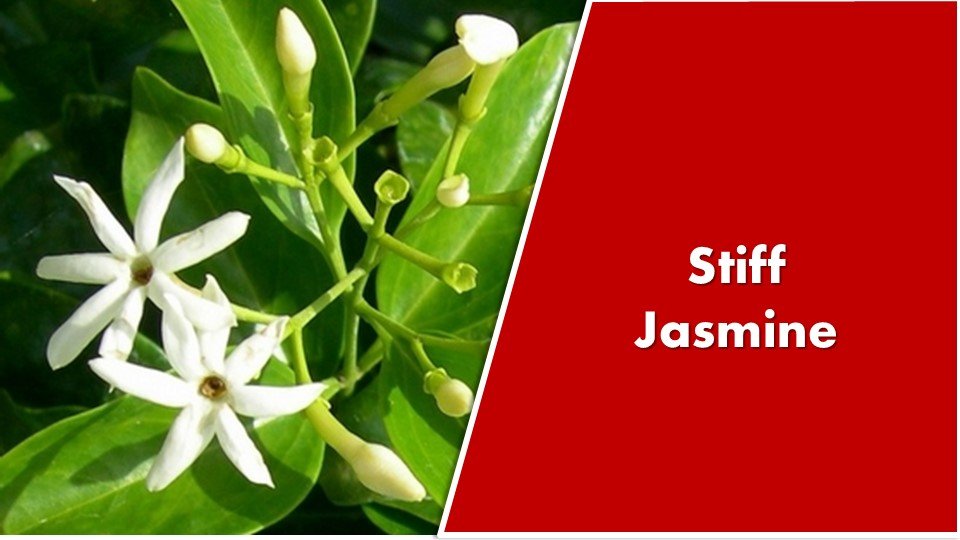
8. Sampaguita Jasmine/ Arabian Jasmine
Scientific name :- Jasminum sambac.
It is a shrub or a twining vine with a height ranging from 0.5 to 2 meters. It is also a national flower of the Philippines. Full sun is the best to induce flowering but partial shade is also tolerable by this plant. It has a strong alluring scent and flowers appear in clusters. It is antispasmodic, vasodilatory, used in eye ointments, eyelashes and has other health benefits like many other types of Jasmine. Its flowers, roots, leaves and many other parts are used for varied purposes.
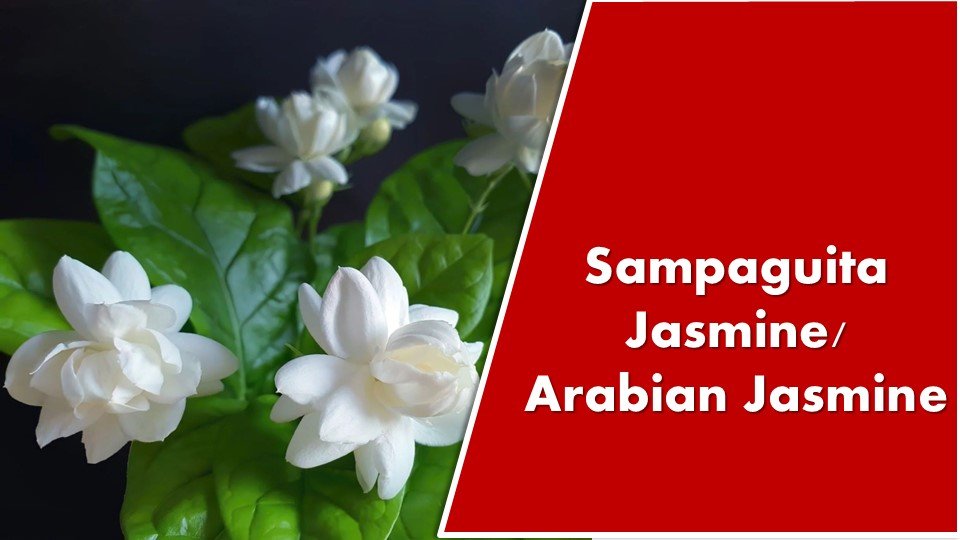
9.Dwarf Jasmine
Scientific name: Chrysojasminum parkeri.
It was discovered in Chamba, Himachal Pradesh. It is a dwarf species whose height hardly reaches 25-30 cm. It is a rare shrub and sprawler with yellow coloured flowers and oval leaves usually planted in containers. It is a winter deciduous plant that needs sunlight for its growth. Used in cosmetic industries but as it is highly endemic and rare, therefore its involvement isn’t as much as other species of Jasmine.
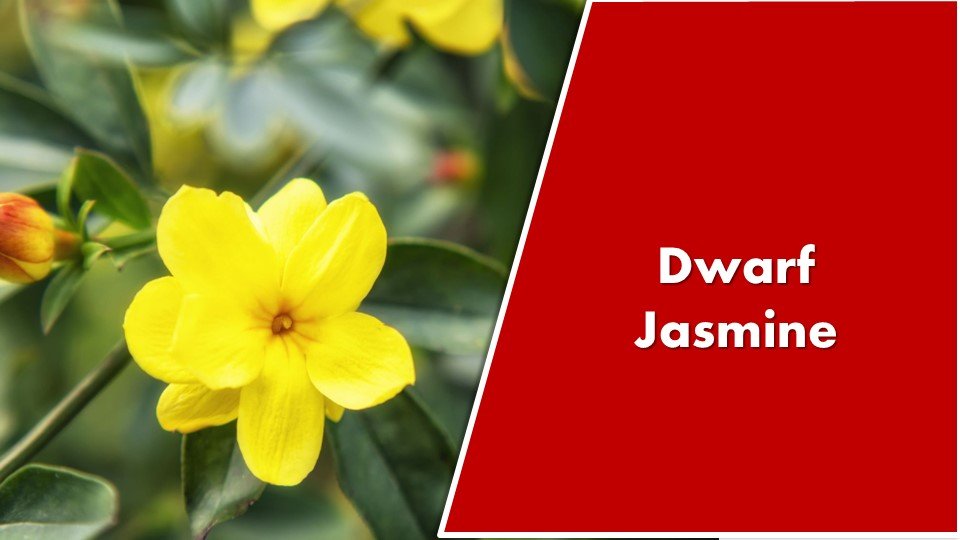
10. Common Jasmine
Scientific name :- Jasminum officinale.
It is also known as Summer Jasmine or Poet’s Jasmine and is said to be a native of Iran. The flowers are usually white and yellow and rarely pink. They don’t have tendrils but are able to climb. It can reach upto a height of 4-8 meters. Ideal temperature for its growth is 12-35° C. It is frost resistant which helps in its year round growth. It is used as a stress reliever, used for making garlands, used in the usual cosmetic and food industries etc. It has ornamental significance as well.
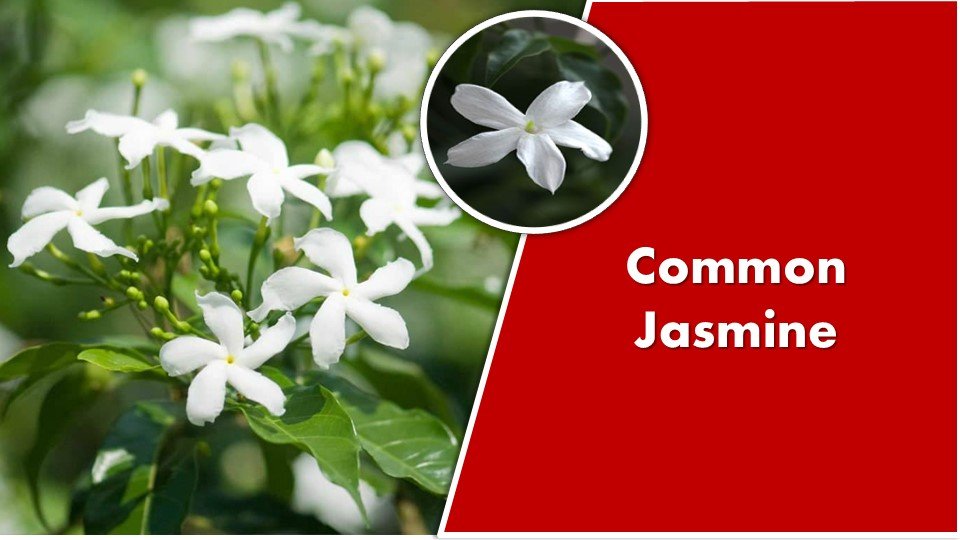
Also Read:
11. Wild Jasmine
Scientific name :- Jasminum angustifolium
It is native to Sri Lanka and some parts of India. It is a climbing species that reaches upto a height of 5-6 meters. It has fragrant flowers with 5-7 petals white or off yellow color, they bloom between June to August. It has significance in the medical, ornamental as well as cosmetic world. Its roots have been used in homeopathy and ayurveda, it is used to calm and relax the nervous system, relieve headaches etc.
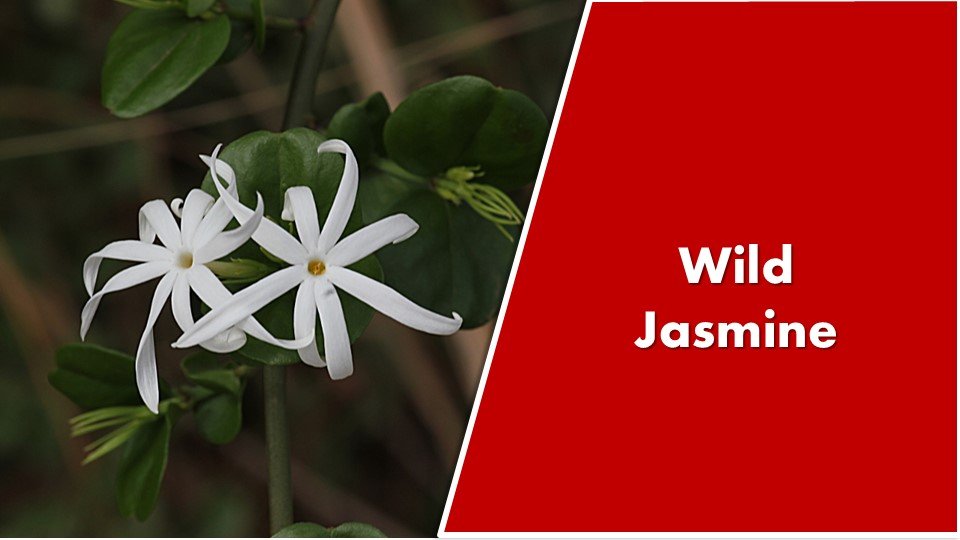
12. Crape Jasmine
Scientific name :- Tabernaemontana divaricata
This species is native to India and is cultivated in many warm areas of different countries and continents. It is an evergreen type of Jasmine and takes the form of a small tree or a shrub and grows around 2-3 meters. It is also called Milk flower because of the exudation of milky latex from the stem. It is also not true Jasmine but has a scent similar to that. It is very much used in landscape gardening for its glossy foliage and also used as border or fillers in gardens.

13. Pink Jasmine
Scientific name :-Jasminum polyanthum
It is a native species of Burma and China. It has a dense and robust vine of approx 15-20 feet if provided a support. It is evergreen or partly deciduous, it has ornamental significance as it covers the borders or fences beautifully. It is fast growing with star-shaped pink and off white flowers. Approximately 60-65% humidity and 13-25°C temperature is suitable for its growth. It provided a variation in shade of your green corner, used in dye industry, cosmetics etc. Jasmine tea also boosts metabolism and gives a soothing effect.
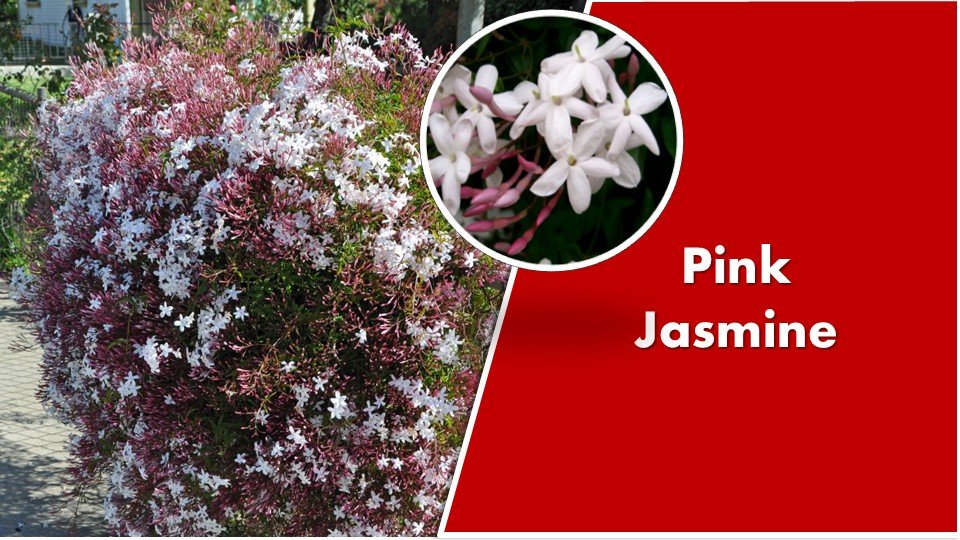
14. Primrose Jasmine/Japanese Jasmine
Scientific name :- Jasminum mesnyi
It is native to Southern China and Vietnam. It is an evergreen shrub that is approximately 3 meters tall. It has fragrant, exquisite yellow flowers that bloom during Spring and summer season and needs direct sunlight. Protection from cold is usually done by mulching. Its tea is filled with antioxidants, it is good for skin, vibrant flower color attracts pollinators and maintains the ecosystem, adds an element of beauty and uniqueness and fragrance in your garden.
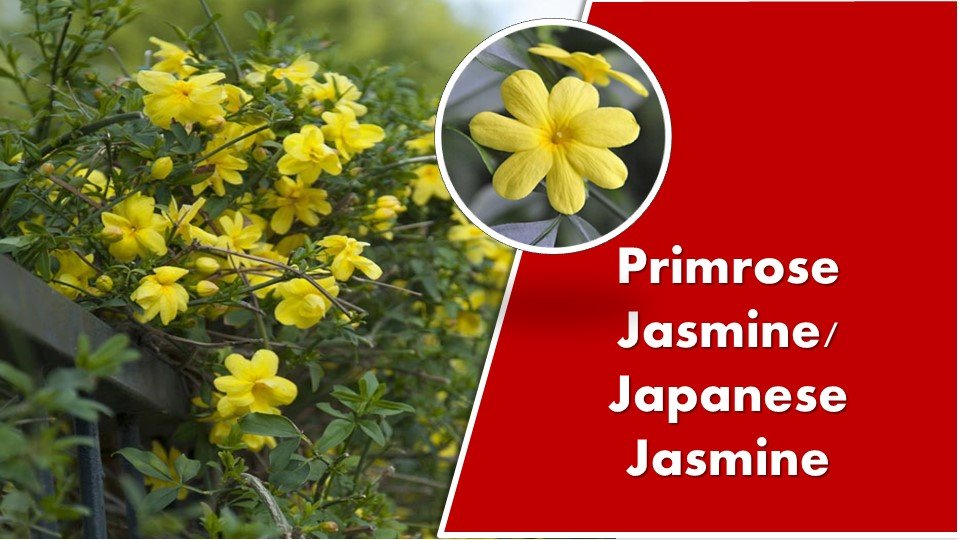
Alao Read
- Top Flowering Trees in India
- Different Types of Hibiscus Flowers
- Highest Oxygen Producing Indoor Plants
Conclusion
How busy must be different types of Jasmine plants to keep every part of them at utilization . We have always linked Jasmine with cosmetology, perfumery and decors but who thought that this alluring, pleasant scented flower would have a multitude of other properties. Medicines were always thought to be bitter tasting, nasty smelling but do you still think the same ? Jasmine is indeed a beautiful marvel on mother earth.
Latest Post:
- November Issue 2025- Times of Agriculture Magazine
- Punjab & Sind Bank Introduces Special Program to Support Food and Agro-Processing Sector
- Beyond Classrooms and Gardens: How a Professor Turned His Passion into Purpose
- October Issue 2025- Times of Agriculture Magazine
- Top 10 Pesticide Companies in the World
- September Issue 2025- Times of Agriculture Magazine
- Top 15 Fertilizer Companies in the World
- Top 10 Vegetable Farming Profit Per Acre in India
- August 2025 : Times of Agriculture Magazine (AgriVoltaics Farming)
- Button Mushroom Farming: Infrastructure, Cultivation, and Profitability
- Sahiwal Cow: Characteristics, Milk per Day, Price and Origin
- July 2025 : Times of Agriculture Magazine
- June Issue (2025) – Times of Agriculture Magazine
- How to Create Modern Commercial Greenhouse Agriculture
- REACH NEW HEIGHTS WITH YOUR BUSINESS AT VIETSTOCK EXPO & FORUM 2025
- Revamping Waste: A wish list This World Environment Day
- Types of Banana in India : Health & wallet friendly fruit
- May Issue (2025): Times of Agriculture
- How to Grow Oyster Mushrooms at Home in India
- Top 10 Profitable Fruit Farming in India
- 5 Unique Hobby Farm Animals You Should Consider Domesticating


